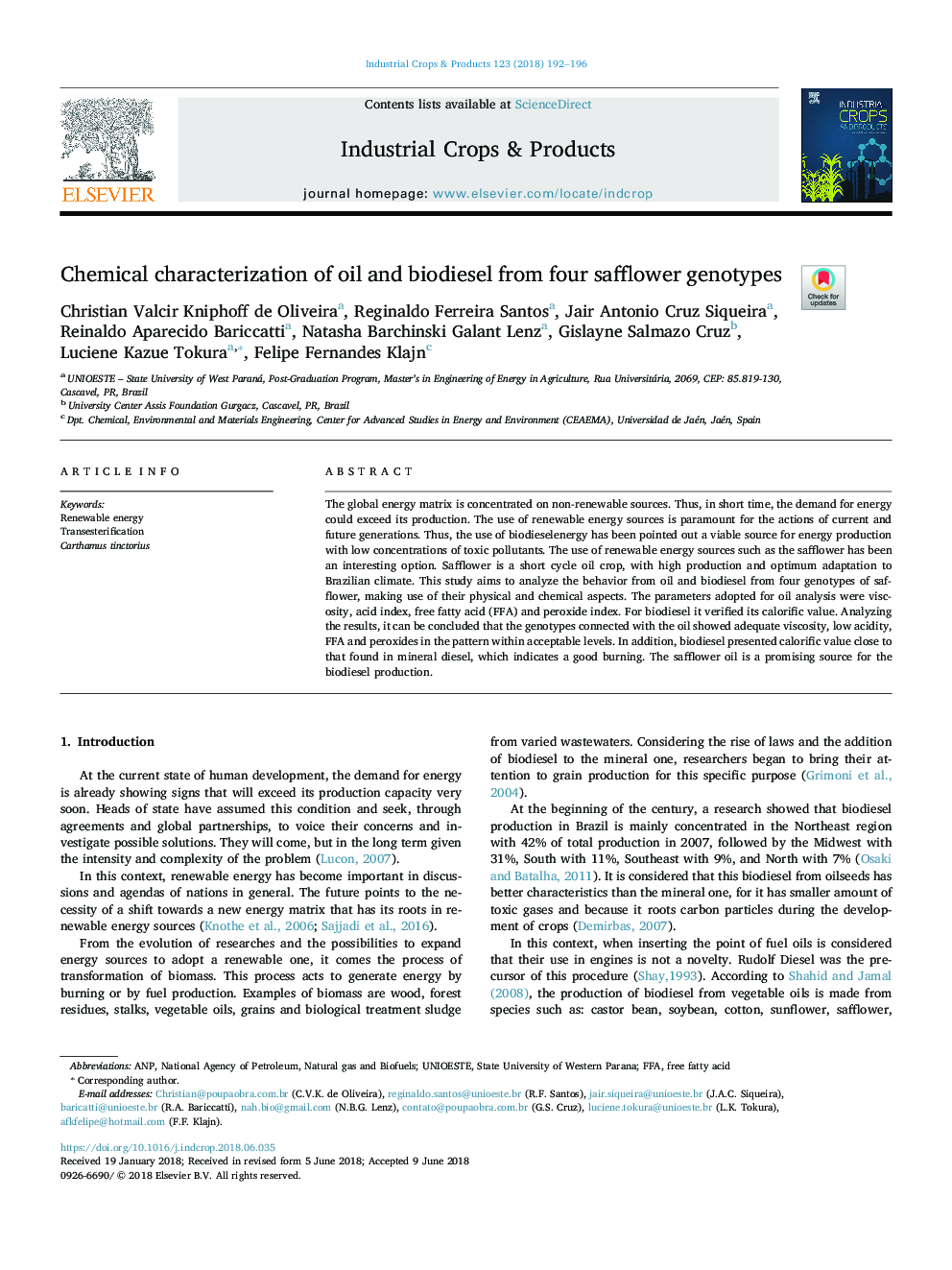| Article ID | Journal | Published Year | Pages | File Type |
|---|---|---|---|---|
| 10116987 | Industrial Crops and Products | 2018 | 5 Pages |
Abstract
The global energy matrix is concentrated on non-renewable sources. Thus, in short time, the demand for energy could exceed its production. The use of renewable energy sources is paramount for the actions of current and future generations. Thus, the use of biodieselenergy has been pointed out a viable source for energy production with low concentrations of toxic pollutants. The use of renewable energy sources such as the safflower has been an interesting option. Safflower is a short cycle oil crop, with high production and optimum adaptation to Brazilian climate. This study aims to analyze the behavior from oil and biodiesel from four genotypes of safflower, making use of their physical and chemical aspects. The parameters adopted for oil analysis were viscosity, acid index, free fatty acid (FFA) and peroxide index. For biodiesel it verified its calorific value. Analyzing the results, it can be concluded that the genotypes connected with the oil showed adequate viscosity, low acidity, FFA and peroxides in the pattern within acceptable levels. In addition, biodiesel presented calorific value close to that found in mineral diesel, which indicates a good burning. The safflower oil is a promising source for the biodiesel production.
Related Topics
Life Sciences
Agricultural and Biological Sciences
Agronomy and Crop Science
Authors
Christian Valcir Kniphoff de Oliveira, Reginaldo Ferreira Santos, Jair Antonio Cruz Siqueira, Reinaldo Aparecido Bariccatti, Natasha Barchinski Galant Lenz, Gislayne Salmazo Cruz, Luciene Kazue Tokura, Felipe Fernandes Klajn,
